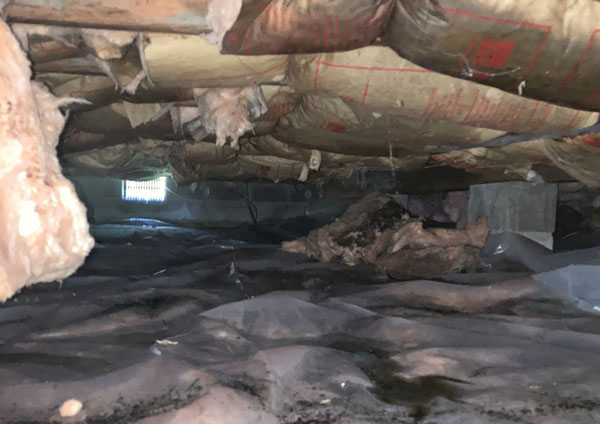
The 5 Main Reasons Your Basement Has Water In It
A wet basement is not just a nuisance; it can be a serious problem that leads to structural damage, mold growth, and decreased property value. Understanding the root causes of water infiltration is crucial for effective prevention and remediation. Here are the five main reasons your basement might be experiencing water issues.
Poor Drainage Around the Foundation:
One of the most common reasons for a wet basement is poor drainage around the foundation of your home. When rainwater or melted snow cannot properly drain away from the foundation walls, it can accumulate around the basement and seep through cracks or porous surfaces. Clogged gutters, improper grading, or insufficient downspouts are often the culprits behind inadequate drainage. Regularly cleaning gutters, extending downspouts away from the foundation, and ensuring proper grading can help mitigate this issue.
Cracks in Foundation Walls or Floors:
Cracks in the foundation walls or floors provide an easy entry point for water to infiltrate your basement. These cracks can develop due to soil settlement, hydrostatic pressure, or foundation movement over time. Even small cracks can allow significant amounts of water to seep through during heavy rainfall or when the water table is high. Repairing foundation cracks promptly using appropriate sealants or epoxy injections can prevent water intrusion and further structural damage.
Inadequate Waterproofing:
Many basements lack proper waterproofing measures, leaving them vulnerable to water infiltration. Waterproofing involves applying sealants or membranes to foundation walls and floors to create a barrier against moisture. Without adequate waterproofing, groundwater can easily penetrate through the concrete, leading to dampness and water seepage in the basement. Investing in professional waterproofing solutions, such as exterior waterproofing membranes or interior sealants, can significantly reduce the risk of water damage.
Faulty or Inadequate Sump Pump System:
A sump pump is a critical component of any basement waterproofing system, as it helps to remove excess water and prevent flooding. However, if the sump pump is faulty, improperly installed, or inadequate for the size of the basement, it may fail to effectively manage water levels during periods of heavy rainfall or high groundwater levels. Regular maintenance and testing of the sump pump, including checking the float switch, cleaning the pump pit, and ensuring proper discharge, are essential to ensure its reliable operation.
Hydrostatic Pressure:
Hydrostatic pressure occurs when groundwater exerts force against the foundation walls of a basement. This pressure can increase during periods of heavy rain or when the water table is elevated, leading to water seepage through cracks, joints, or porous concrete. In severe cases, hydrostatic pressure can cause structural damage to the foundation walls and compromise the integrity of the entire structure. Installing a reliable drainage system, such as exterior French drains or interior perimeter drains, can help alleviate hydrostatic pressure and protect your basement from water damage.
A wet basement can be a major headache for homeowners, but understanding the underlying reasons for water infiltration is the first step towards effective prevention and remediation. By addressing issues such as poor drainage, foundation cracks, inadequate waterproofing, faulty sump pumps, and hydrostatic pressure, you can protect your basement from water damage and ensure a dry, healthy living space for years to come. Regular maintenance, timely repairs, and professional waterproofing solutions are key to keeping your basement dry and free from water issues.